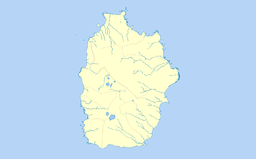Convent of São Boaventura
| Convent of São Boaventura (Convento do São Boaventura) | |
| Convent (Convento) | |
| | |
| Official name: Igreja e claustro do Convento Franciscano de São Boaventura | |
| Named for: Francis of Assissi/Saint Bonaventure | |
| Country | |
|---|---|
| Autonomous Region | |
| Group | Western |
| Island | Flores |
| Municipality | Santa Cruz das Flores |
| Location | Santa Cruz |
| - elevation | 266 m (873 ft) |
| - coordinates | 39°27′9.49″N 31°7′38.92″W / 39.4526361°N 31.1274778°WCoordinates: 39°27′9.49″N 31°7′38.92″W / 39.4526361°N 31.1274778°W |
| Length | 37.0 m (121 ft), Southwest-Northeast |
| Width | 46.5 m (153 ft), Northwest-Southeast |
| Style | Baroque |
| Owner | Portuguese Republic |
| For public | Private |
| Visitation | Closed |
| Management | Direção Regional de Cultura |
| Operator | Câmara Municipal de Santa Cruz das Flores |
| Status | Property of Public Interest |
| Listing | President of Regional Government, 98/1980; JORAA, Série I, 31,16 September 1980 |
 Location of the convent in the municipality of Santa Cruz das Flores
| |
The Convent of São Boaventura (Portuguese: Convento de São Boaventura), Convent of Saint Bonaventure, popularly referred to it as the Church São Francisco (Church of Saint Francis of Assissi), is located in the civil parish of Santa Cruz, in the municipality of the same name in the Portuguese archipelago of the Açores.
History
This building, to the invocation of Saint Bonaventure, a Franciscan convent was built under the initiative of Inácio Coelho, then vicar of Santa Cruz. Legend suggests that the church and convent were erected in order to fulfill a vow following the triumph of Portuguese forces over Spain during the Restoration War.[1]
During this period, friar Diogo das Chagas referred to the convent:
- There is more to this new...village a convent of Franciscan friars who in August 1651 ordered constructed by the Very Reverend provincial Father Friar Mateus da Conceição, at the request of the said Reverend Father Vicar Inácio Coelho that he wanted to be patron, endowing him with a deed in Perpetuum in five moios of wheat annually, and a barrel of fine wine for the masses and quarter wheat, in addition to two rams in trade, in perpetuity following his funeral, and for the convent, he endowed nine acres of land with houses, which are today where the dormitories and church are located, where the first Mass and name was assigned to Saint Bonaventure...; etc...etc...[1]
With the extinction of the religious orders in 1834, the church was transferred to the Third Order, and the convent acquired by a private landowner. Later, this building was acquired by the Santa Casa da Misericórdia of Santa Cruz, who installed in the building their hospital.[1]
The building was classified as a Property of Public Interest by the IPPAR, under resolution 98/80, 16 September 1980. At the middle of the 20th century, the first remodelling of the convent occurred, that included the primarily the corners and cornices.[2]
In the late 20th century the Museum of Flores was installed in the building, in the former convent and cloister, while the ancillary structures were used by the French forces, until the local health center was established.[2] Under resolution 18/2011/A, by act of the Regional Legislative Assembly of the Azores, several projects were established, that included: a future intervention and general renovation of the convent's paints, to be consulted by the property-owners, local parish administration and municipality of Santa Cruz; and the protection of the building owing to salt.[2] Public works at the convent, included repairs to the corners, frames and roof; during the course of the repairs it was determined that the level of degradation, suggesting an urgent preservation of the building. Following this restoration the building was trimmed in yellow ochre paint, resulting in a local polemic, owing to the change in the buildings appearance.[2]
References
- Notes
- ↑ 1.0 1.1 1.2 Francisco Carreiro da Costa (1955), p.6.
- ↑ 2.0 2.1 2.2 2.3 Noé, Paula (2002), SIPA, ed., Igreja e claustro do Convento Franciscano de São Boaventura (IPA.00008193/PT072006040001) (in Portuguese), Lisbon, Portugal: SIPA – Sistema de Informação para o Património Arquitectónico, retrieved 6 October 2013
- Sources
- Chagas, Diogo das (OFM) (1989). Espelho Cristalino em Jardim de Várias Flores [Crystal Mirror the Garden of Various Flores] (in Portuguese) (2nd ed.). Ponta Delgada (Azores), Portugal: Secretaria Regional da Educação e Cultura, Direcção Regional dos Assuntos Culturais, Universidade dos Açores, Centro de Estudos Doutor Gaspar Frutuoso.
- Costa, Francisco Carreiro da (17 October 1956), "85. Igreja de São Pedro - Ponta Delgada - Ilha das Flores", História das Igrejas e Ermidas dos Açores (in Portuguese), Ponta Delgada (Azores), Portugal